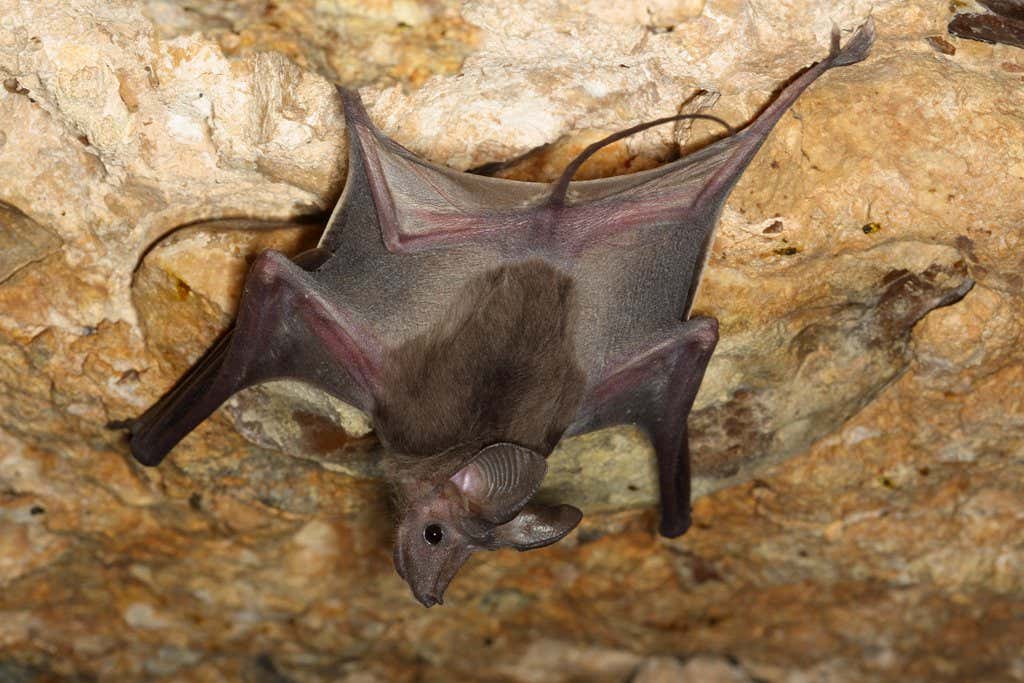
Greater mouse-tailed bats crawl backwards
Sahar Hajyahia et al. 2025
Orientating yourself in the darkness of a cave seems like a difficult task. But some bats may have an ingenious solution: using their tails.
Greater mouse-tailed bats (Rhinopoma microphyllum) live in groups inside small caves where flying is challenging, so they hang from the cave’s walls and move deeper into it by crawling backwards. They manoeuvre this way in many situations, such as in response to the appearance of a predator, or when they want to find a better position in the cave.
Biologists have long wondered whether these bats might use their unusually long tails as a “sensor” to navigate inside the caves, and so Yossi Yovel at Tel Aviv University in Israel and his colleagues designed two experiments to put the bats’ tails to the test.
In the first experiment, the researchers recreated a setup that mimicked the interior of a cave, creating a maze with obstacles similar to the uneven, rocky terrain the bats would encounter naturally. The team measured how long it took for the bats to climb the wall while crawling backwards, and how smoothly they were able to do so, first naturally and then with their tails anaesthetised.
The bats moved their tails back and forth to sense the obstacles and find their way through the maze. But when the researchers anaesthetised the bats’ tails, the flying mammals navigated the maze less smoothly and around 10 per cent more slowly. They still made it through, however, suggesting they also use other body parts to sense obstacles. “When you walk backwards, you can still feel with your body and with your legs,” says Yovel. “It’s clear that they can do it. But there was a significant reduction in performance.”
In the second experiment, the researchers designed a Y-shaped maze that presented two corridors with different ridged textures that the bats could feel and choose between. They used textural differences between the two corridors to teach the bats that one corridor led to a reward, while the other didn’t. Even though the textural differences were subtle – one corridor had gratings every 1.5 centimetres and one had gratings every 1 cm – the animals were able to distinguish between them.
While other bat species have long tails, the researchers say this is so far the only one known to find its way in the darkness using this distinctive strategy. “I don’t think this is the general for bats with long tails,” says Yovel. But “until we test the other bats, we don’t really know”.
Topics:






